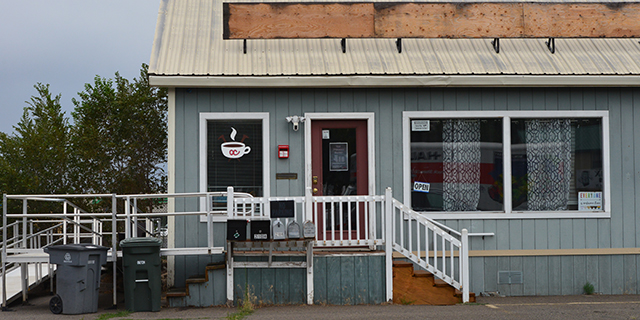Through-hiking in Eastern Oregon
Published 11:50 am Friday, September 20, 2013
The Elkhorn Crest Trail near Baker City offers hikers a one-day through hike
The concept of through-hiking – or “thru-hiking” if you’re not a strict spelling constructionist – is based in part on the idea that some trails are so spectacular that to miss a single foot of their tread is to be a traitor.
Northeastern Oregon has quite a lot of trails that qualify by that standard.
It’s just that none of them is very long.
And it’s the extreme length of certain trails, in addition to their scenic attributes, that prompted hikers to coin the term through-hiking.
The moniker is applied most often in reference to two of America’s renowned, continent-spanning paths – the 2,660-mile Pacific Crest Trail on the West Coast and the 2,200-mile Appalachian Trail on the East Coast.
Hikers came up with “through-hiking” to describe the accomplishments of those rare walkers who manage, in a single year, to cover the whole of one of the trails.
A few hundred people pull off this (blistered) feat in a typical year.
None of the trails in our region offers anything like the grueling, months-long undertaking of the PCT or the AT.
(Nor does any require the major investments in time and money.)
But there is one route – the Elkhorn Crest Trail near Baker City – that poses a considerable, albeit different, sort of challenge: the one-day through-hike.
This 24-mile path was designated as a National Recreation Trail in 1980, largely due to the efforts of Moose Stephens, who worked for the Wallowa-Whitman National Forest in Baker City.
As its name implies, the trail follows the crest of the Elkhorn Mountains, the range that forms the imposing 5,000-foot-tall wall at the western edge of Baker Valley.
The trail got started in the late 1960s. Over the next decade or so, construction crews, relying in places on copious amounts of explosives to bust up the stubborn stone, built several miles of trail both north and south of Cracker Saddle, one of just three points where a road meets the trail.
In 1981 the trail was extended from its southern end at Marble Creek Pass for seven miles north to Pole Creek Ridge.
The Elkhorn Crest Trail arrived at its current configuration in 1984 when 3.3 miles of trail were built between the northern terminus near Anthony Lakes, and Dutch Flat Saddle.
The Crest Trail is unusual among Northeastern Oregon trails not only for its length but for its location. No other trail in the region follows with such consistency the high ground.
Such a route is not feasible in the Wallowas, where the ridges are invariably interrupted by a major river drainage or basin.
This topographical curiosity of the Crest Trail makes it well-suited for the one-day through-hike, however.
Because the trail’s designers sought to stay near the crest, the grade is abnormally gentle, more like a lakeside route than a mountain path. There are no steep climbs. If you hike from south to north you’ll gain little more than 1,000 feet over the 24 miles.
Several trails elsewhere in the Elkhorns climb that much in less than two miles.
If you start at Anthony Lakes you’ll have to ascend about 1,200 feet in the first three miles or so, but at least your legs ought to be fresh.
A day-hike, even one that’s almost as long as a marathon, is of course a much simpler affair than planning, say, a 2,660-mile journey on the PCT from Mexico to Canada.
For the latter trip hikers obviously can’t carry everything they need in a single backpack.
(You’d need a dumptruck just for the beef jerky and the ibuprofen.)
So PCT (and AT) through-hikers assemble a dozen or more packages, each containing food, maps and other necessities, and then either mail them to post offices near the trail or arrange to have someone deliver the parcels.
Elkhorn Crest through-hikers, by contrast, should be able to get by with a modestly sized day pack.
Probably the most troublesome task is figuring out how to get to each of the trailheads.
If you can’t connive someone into dropping you off in the morning and picking you up in the evening, you’ll need two vehicles.
This of course means you have to drive two vehicles to one trailhead. leaving a rig there and driving the other to other trailhead. The trailheads, by the way, are about 35 miles apart.
Access to the north trailhead is easy; it’s just off the paved Anthony Lakes Highway near the ski area.
The south trailhead at Marble Creek Pass is, well, a different matter.
The Forest Service road that climbs to the pass, elevation 7,542 feet, would appeal to those who test shock absorbers, but to few others.
You will need at a minimum a high-clearance vehicle, preferably a four-wheel-drive pickup or SUV.
A less robust but all-wheel-drive vehicle, such as a Subaru or a “crossover” SUV (think Toyota RAV4 or Honda CR-V), would not likely make the climb with every vital part intact.
The oil pan, for instance.
The other key piece of advice for a Crest Trail through-hiker has to do with water.
There isn’t any along the trail.
Unless it’s raining or snowing, anyway.
The lone exception is the outlet stream from Black Lake, but the trail crosses it less than a mile from the Anthony Lakes trailhead so it’s not conveniently located.
This is the downside of the route’s accommodating topography.
Because the trail hews to the high ground it misses the springs, lakes and streams, most of which are several hundred vertical feet below the path.
So unless you’re keen on a couple of time-consuming and calorie-depleting detours – unlikely, with a 24-mile itinerary – it’s best to bring all the water you’ll need for a full day of walking.
“Full day” in this case could range from six hours, if your pace is more akin to trail-running, to 10 hours or more if you prefer frequent breaks for resting, eating and photography.
That last, by the way, is almost as mandatory as adequate water.
No trail in the region can match the Elkhorn Crest for encompassing views, and it would be a pity to have to rely solely on your memory (as opposed to your camera’s memory card) to recall the scenes.
The trail never goes above timberline but the trees at these elevations – the average is about 8,000 feet – have the scattered and stunted nature of alpine forests.
The whitebark pine is the predominant species, with an occasional subalpine fir mixed in.
For a majority of its mileage the trail is on the west side of the Elkhorn Crest, which means the views extend far into Grant County to the south and west, and into Union and Umatilla counties to the northwest.
At several points, though, the trail reaches a gap in the ridgeline where the view suddenly opens east to Baker Valley below and to the Wallowas beyond.
As with any long hike, of course, you’ll be spending more time looking at your feet than gazing toward the horizon.
Which is nice because you’ll be hiking through, and indeed over, a fine lesson in geology.
The Elkhorns are in a geologic sense two quite disparate ranges.
The southern section – from near Cracker Saddle, about 14 miles from Marble Creek Pass and 10 miles from Anthony Lakes – passes through mainly brown sedimentary and metamorphic rock.
Most of the northern Elkhorns, by contrast, are composed of white granitic rocks similar to those in the central Wallowas.
(“Hiking Oregon’s Geology” by Ellen Morris Bishop has much more detail; also, the author is a real geologist, capable of explaining such things as subduction zones and exotic accreted terranes.)
Besides the panoramic views and the interesting geology, you’ll almost certainly see mountain goats on a Crest Trail through-hike.
These gravity-defying animals number about 350 in the Elkhorns, but they’re most prevalent along the trail’s southernmost five miles or so, in particular on the cliffs that overlook Twin Lakes.
As the highest trail in the Elkhorns, the Crest Trail is the first to be snowbound in fall.
In most years, though, the trail remains accessible well into October.
In deference to the elevation, hikers should carry warm clothing.
On a typical day the temperature on the trail will be 20 or more degrees cooler than in Baker City orLa Grande.





